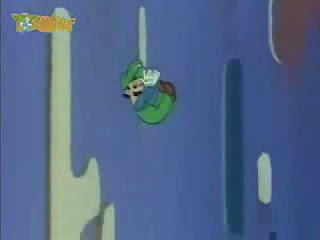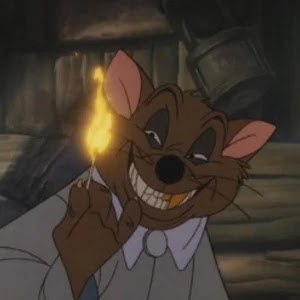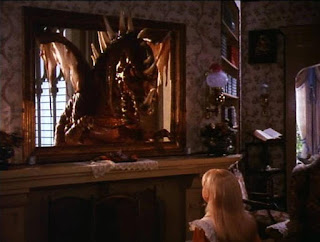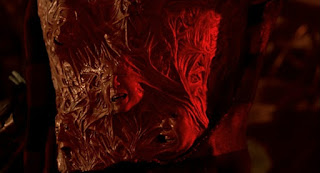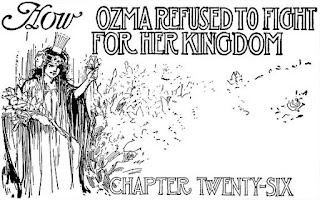
Oz books are always a great distraction from the real world. As is critiquing them. On the eve of its falling into the public domain on January 1st, I finally read The Lost King of Oz, the 19th volume of the Famous Forty Oz books, and fifth book by Ruth Plumly Thompson. Like it or not this book is a pivotal one in the series; it features the return of Mombi, not seen since the 2nd book The Marvelous Land of Oz, and the return of the titular King of Oz, Pastoria, who went missing long before the events of the first book. When she inherited the Oz series, Thompson ran things as she saw fit. She wasn’t afraid of shaking things up in Oz. She started by giving the Scarecrow a backstory (which falls apart under closer scrutiny), and soon Oz was gaining new independent kingdoms left and right (it’s as if towns and mayors don’t exist in Oz, every little town has to be its own gimmicky little kingdom), and new mainstay characters like Kabumpo the Elephant and the Yellow Knight. Ozma was a lot less of a pacifist, as we’ll see in this book, and eventually makes Oz a colonial power, quite contrary to the first 14 books. Later writers would be more careful with Oz canon, not wanting to contradict anything Baum wrote, unless deliberately doing their own thing with Oz like Wicked and Dorothy Must Die. But Thompson did as she wished. She did things her own way. No one stopped her, it would seem. She had official backing from the publisher and the go-ahead from Maud Baum, L. Frank Baum’s widow, giving her a level of legitimacy no modern Oz writer will ever have, and this emboldened her.
There are some that really love her books, and there are some that really hate them. But I think most Oz book fans agree that they were pretty hit-or-miss. I think at least some of the criticisms leveled at her are unfair at times; after all, L. Frank Baum also liked to introduce new kingdoms and characters, and forget them just as easily in the next book. Baum too would occasionally decide he wanted to focus on original characters and leave the main characters as mere cameos. His books were also filled with encounters with gimmicky communities that distracted from the main plot. Baum also liked puns almost as much as Thompson did. Even though Thompson didn’t always follow canon, sometimes Baum contradicted his own canon. If someone’s main criticism of Thompson is the racism in some of her books, then I won’t blame them one bit. I don’t like that either. But I think some people don’t like her just because she’s not Baum, overlooking flaws in Baum’s stories while criticizing Thompson for doing the same things he did. As for me, I suppose I’m just pretty forgiving in general when it comes to Oz books because I have a soft spot for them. I fall squarely into the “hit-or-miss” camp when it comes to Thompson. I can see where her detractors are coming from, but I recognize she deserves credit for keeping the series going, and for those of us writing our own Oz stories, she really paved the way. No one’s going to see and interpret Oz exactly like Baum did. Thompson was the first one to interpret Oz in their own unique way after its creator passed away, and any later writer of Oz stories owes her a debt for that. Do I always like her interpretation of Oz, though? No, not always.
With all that said, I have mixed feelings about The Lost King of Oz. Spoilers ahead, by the way.
The main character of the book is Mombi, who is also the main villain. For some reason Thompson seems to have a special hatred for Mombi, since she extended Mombi’s rap sheet and elevated her to be even more evil than she was originally. Even after this book, Mombi gets blamed for new things that happened before Dorothy’s arrival in Oz which were unmentioned by Baum (I’m currently reading The Giant Horse of Oz, which does exactly this). In addition to kidnapping Ozma and switching her gender, she erased King Pastoria’s memory and turned his Prime Minister into a goose. This goose turns up at her new workplace, a kitchen for King Kinda Jolly (take a second to groan at the name), in the small kingdom of Kimbaloo in Gillikin Country (or “Gilliken” as Thompson insists on spelling it for some reason). The goose, Pajuka, is on the menu, despite Oz being a vegan fairyland where “meat” grows on trees, and where all animals have human-level intelligence and talk. Evidently the barbaric residents of Kimbaloo are still carnivorous despite this. Anyway, upon being reunited with the former Prime Minister, Mombi comes up with a somewhat convoluted plan to find King Pastoria and use him to regain her powers and take over the Emerald City. I don’t know how she thought Glinda, Ozma and the Wizard would simply stand by and allow a powerless former witch to take over Oz, but evidently she didn’t think that far ahead. She kidnaps a boy who overheard her evil scheme, Snip the Button Boy (in addition to being one of the last Oz kingdoms to still murder sentient animals for meat when they could literally find a tree that grows fried chicken if they wanted to, Kimbaloo’s main export is buttons, hence Snip the Button Boy whose clothes is covered in buttons), and forces him to be her pack mule on the long journey. They encounter some forgettable Wacky Wayside Tribes along the way which pad the book out and make it longer.
Eight whole chapters in we finally get our secondary plot (suddenly introducing a subplot almost halfway through the book is a thing Baum did as well), in which Ozma and her friends are given a clue about Pastoria and set out to find him. Before they get the clue we learn that Dorothy has gone off to visit some friends, leaving Ozma sad and lonely. I am glad Thompson preserved their chemistry, and never decided to pair Ozma up with some random prince or something. As you know if you’re familiar with the series, Ozma probably really isn’t into princes, if you catch my drift. Overall their subplot isn’t terribly significant to the main plot. And in chapter 10 we get a third subplot featuring Dorothy Gale. And let me tell you, the wasted opportunities in her subplot make me angrier the more I think about it. After visiting some characters from the previous book Grampa in Oz, she stumbles upon a very convenient Wish Way, a dirt road where your wishes come true if you speak them aloud. Thompson used this plot device in her first Oz book. There are at least two Wish Ways in Oz that we know about. It’s interesting to think of how previous books would have been different if people had known about the Wish Way. Dorothy could have wished herself back to Kansas in the first book, Jinjur could have conquered Oz using it, Ozma could have gone there and simply wished for Ev’s royalty to be freed from the Nome King without having to travel to Ev, Ojo could have wished his uncle not to be turned to stone anymore. There wouldn’t be an Oz series anymore, really. I mean maybe if the Wish Way randomly changed locations periodically it might make for a good occasional plot device, but having it always be in the same spot and not be widely known about and never be used by anyone until they stumble upon it is a little unbelievable. (In my planned Oz book, it’s protected by spells and largely obscure, but Ozites can still find out about it if they read the Oz histories).
Anyway, Dorothy accidentally wishes herself back to America, where she appears at the set of a movie somewhere not far from Hollywood, California (I pictured the whole thing taking place at Kirk’s Rock). After a bit she begins to rapidly age into an adult woman, her true age in 1925 if she had stayed in America. So according to Famous Forty canon, this is what happens when someone from the Outside World travels to Oz and stops aging, and then comes back. If it were to happen in a modern story Dorothy would age to nearly 130 years old and likely die. All of the characters who immigrated to Oz from the Outside World are essentially trapped there now. This makes me question the story in The Lost Tales of Oz, The Wizard in New York by Sam Sackett, where the Wizard of Oz, Oscar Diggs, goes to the 1939 World Fair in New York. Why didn’t he age to 100 or however old he would be in 1939? Of course, it’s up to the reader whether they want to consider modern Oz pastiches canon or not. I like to, just for fun. But surely they could have come up with some magical prevention spell to keep the Wizard from aging, as a nod to what happened to Dorothy when she went back to America. Perhaps the author could be forgiven for forgetting about this chapter in The Lost King of Oz, because Thompson treats it as forgettable. Or maybe it was avoided because the book was still under copyright, I don’t know.
To sum the rest of this chapter up (yes...this one chapter), she accidentally wishes a stunt dummy to life, and wishes herself back to Oz, where she ages back down to a child. What a wasted plot. There could have been an entire book about Dorothy accidentally wishing herself to America and trying to get back to Oz. It could have been a clever inverse to the first Oz book, especially at this late point in the series where Oz is very much Dorothy’s home. It could have been called “There’s No Place Like Oz”. I want to read that book. But no, instead it’s another single-chapter-long, quickly forgotten misadventure just like the other chapters that have the characters visit some bizarre gimmick community, and the only way it impacts the plot at all is to introduce Humpy the stunt dummy. A character who could have been left out of the story altogether without the plot changing much. Another annoyance in this chapter is the line Thompson slips in during Dorothy’s ordeal, “as she afterwards explained to Sir Hokus of Pokes”, indicating Dorothy will get back to Oz and tell the story to her friend the Sir Hokus the Yellow Knight, before it is revealed how she gets back. I mean of course she’ll get back, but way to just remove what little sense of suspense there still was in this episode. I hate when authors spoil their own story like that, it’s a pet peeve of mine. It takes you right out of the story. Wouldn’t want to scare the kids reading by having even an ounce of suspense in the story now would we? Those few words destroyed the entire subplot. Dorothy’s return to America was not treated as importantly as it should have been. This idea with so much potential was wasted just so Thompson could shoehorn this living stunt dummy into the story that didn’t need to be there!
I need to remind myself that there are more important things to be angry at than 95-year-old fantasy stories written for kids. Sigh.
So eventually Mombi gets sick of Snip knowing too much about her plan and throws him down a well, which very conveniently leads Snip to a tailor, Tora, who has been imprisoned by invisible people called the Blanks. This tailor has lost his memory. Hmm, I wonder who he could be? They escape, and rendezvous with Dorothy and the dummy, who have been joined by Kabumpo the elephant, and eventually they meet Mombi. They all come to the conclusion that Humpy the dummy who was just brought to life in America MUST be the lost king, because classism blinds them to the idea that the king might be an amnesiac tailor. Kabumpo even entertains the idea of not allowing Tora to enter the palace because he’s a lowly peasant. Maybe Thompson was trying to make a statement against classism and snobbery here, but reading her other books, I still think she was a lot more classist than Baum. Another example of this is the conspicuous absence of everyone’s favorite and totally not creepy hobo the Shaggy Man from her books. And the fact that just about every book of hers stars royalty or at least has royals as major characters at some point.
Anyway, once the king is revealed at the end of the book, he does not force Ozma to abdicate the throne as some feared, but wishes to continue on as a tailor and let his daughter rule. Thompson could have shaken things up in Oz by having Pastoria take the throne, she had the power to make a decision like that, but she wisely chose not to and kept the status quo going. Fiction needs more strong female rulers, even moreso back in the 1920s, so I think it was the right choice. What’s more debated is the decision for Ozma to order Mombi’s execution via being splashed with water like the Wicked Witch of the West (this was never stated to be the weakness of every witch in Oz). Yes, it would seem Mombi’s attempt to take over Oz was what crossed the line, causing Ozma to break her pacifism. And what’s more, it was meek little Dorothy’s idea to kill her with water. Dorothy, who never killed anyone on purpose before. Now I had already had the ending spoiled for me before I read the book, and was expecting at least an entire chapter devoted to this dramatic event, during which Ozma struggled with the decision, but when I finally read it, I was shocked by how casual and nonchalant the whole thing was. Dorothy and Ozma’s quick decision to kill her to the aftermath of the deed take up barely more than a page in the last chapter.
Ahem...
Whatever happened to the Ozma who, in The Emerald City of Oz, refused to resort to a violent reaction when Oz was being invaded, declaring “No one has the right to destroy any living creatures, no matter how evil they may be, or to hurt them or make them unhappy. I will not fight - even to save my kingdom”? (Aw, you’re making me feel guilty every time I kill a mosquito or cockroach now, Ozma.) Does this sound like the type of person who, when asked if Mombi should be killed, would shrug and reply “Eh, okay.” This is basically what actually happened in the book. Was she replaced by one of Jack Snow’s magical mimics? What happened to Ozma? Well, Thompson happened. She had drastically different ideologies from L. Frank Baum. I bet if she had written the first book, Dorothy would have killed the Wicked Witch of the West on purpose, and would have started moving stuff around in her house as it was falling to aim it at the Wicked Witch of the East.
Part of what got me glued to the Oz series as an adult was L. Frank Baum’s ideology, and Oz being a classless, moneyless and nonviolent fairyland where those who were different were welcomed. The polar opposite of this world. This is all sadly lacking in Thompson’s books. But, some part of me still likes at least some of her books. Handy Mandy in Oz for instance, is my favorite of hers, thanks more to the characters than the plot. Kabumpo in Oz is my second favorite Thompson Oz book, both because of the characters and because it had a plot that kept me guessing what would happen next. I guess what keeps me coming back to Ruth Plumly Thompson is Oz itself, and its characters. And it’s comforting to know there are so many Oz books out there I probably won’t ever run out of them. There’s always going to be another that I haven’t read. So, even if it’s something I’m going to end up heavily criticizing, I still enjoy reading Oz books, if only to escape the real world for a while.
Special thanks to my friend Paul Dana for the book! Otherwise I would have had to wait a few months for it to finally show up on Gutenberg, as it will be public domain in 2021.





